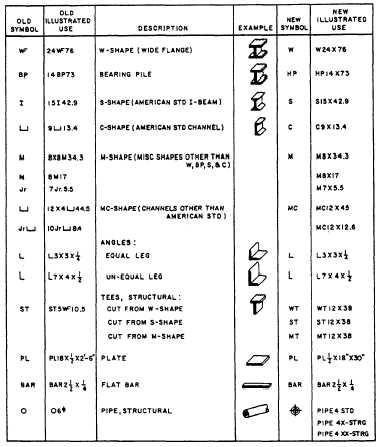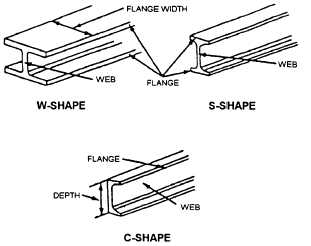Figure 1-32.—Structural steel shapes and designations.
terminology applied to structural steel members, the use
of these members, and the methods by which they are
connected.
STRUCTURAL STEEL SHAPES
Structural steel is manufactured in a wide variety of
cross-sectional shapes and sizes. Figure 1-32 shows
many of these various shapes.
Figure 1-33 shows cross-sectional views of the
W-shape (wide flange), the S-shape (American
Standard I-beam), and the C-shape (American Standard
channel). The W-shape is the most widely used
structural member for beams, columns, and other
load-bearing applications. As seen in the figure, it has
parallel inner and outer flange surfaces that are of
constant thickness. This flange design provides greater
cross-sectional area in the flanges, which results in
greater strength than is provided by the S-shape, which
has a slope of approximately 17 degrees on the inner
flange surfaces. The C-shape is similar to the S-shape in
that its inner flange surface is also sloped approximately
17 degrees. The C-shape is especially useful in locations
section describes structural steel shapes, the
Figure 1-33.—Structural shapes.
where a single flat surface on one side is required. When
used alone, the C-shape is not very efficient as a beam
or column. However, efficient built-up members maybe
constructed of charnels assembled together with other
structural shapes and connected by rivets or welds.
The W-, S-, and C-shape structural members are
designated by their nominal depth, in inches, along the
1-17



